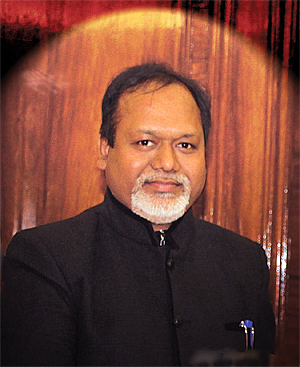INDIAN ARMED FORCES CHIEFS ON
OUR RELENTLESS AND FOCUSED PUBLISHING EFFORTS

SP Guide Publications puts forth a well compiled articulation of issues, pursuits and accomplishments of the Indian Army, over the years

I am confident that SP Guide Publications would continue to inform, inspire and influence.

My compliments to SP Guide Publications for informative and credible reportage on contemporary aerospace issues over the past six decades.
- Interim Defence Budget 2024-25 — An Analysis
- Union Defence budget 2024
- Indian Army: In quest of greater firepower and policy recommendations for gaps
- Indian Army Annual Press Conference 2024
- 6G will transform military-industrial applications
- Tata Boeing Aerospace Delivers 250 AH-64 Apache Fuselages, Manufactured in India
Editorial

As the world witnesses technological advancements in military capabilities, the significance of a robust and modernised Infantry cannot be overstated. In the ever-evolving landscape of military conflicts, ranging from asymmetric warfare to border conflicts and full-scale wars, the role of Infantry remains paramount. This historical truth continues to hold relevance in contemporary warfare.
Recognising the indispensable role of Infantry, the Indian Army has identified the need for a new Future Infantry Combat Vehicle (FICV) with incremental technological improvements. This initiative aims to replace the aging Soviet BMP-IIs, which have served as the backbone of the Army’s Mechanised Infantry since the 1980s but have now outlived their utility. However, it’s crucial to note that even with the planned introduction of the FICV by 2026-27, the complete fleet replacement of 1,750 FICVs is anticipated to take 17 to 18 years, lasting until 2039. This lengthy timeline, highlights the need for continuous upgrades as the first lot approaches midlife. Our lead story by Lt General Abhay Krishna (Retd) covers the Indian requirement for FICV.
Leading armies around the world are investing in “soldier as a system” initiatives to modernise their infantry. These initiatives focus on providing soldiers with integrated systems that include weapons, body armour, communications, and other equipment. These systems are designed to make soldiers more lethal, survivable, and agile. Yet, amidst this pursuit of modernisation, challenges abound. Despite these challenges, it is imperative that India modernise its infantry. In his article, Lt General Dushyant Singh (Retd) talks about how the infantry is still the backbone of the Indian military, and it must be prepared to meet the demands of the future battlefield.
The rapidly evolving military technology landscape introduces significant hurdles in the quest to enhance Infantry capabilities and survivability. New weapons and systems are being developed all the time, and the infantry must be able to adapt to these changes quickly. The race for cutting-edge technologies is on, promising to redefine ground-based forces’ capabilities. Rohit Goel features some of these technologies that can be expected in the near future.
On the diplomatic front, the recent visit of Indian Defence Minister Rajnath Singh to Rome on October 9, 2023, marked a significant development. This visit cleared the path for a comprehensive revival of defence cooperation between India and Italy, with a formal defence cooperation agreement. Ranjit Kumar brings you the details on the visit in his article in this issue of the magazine.
Drawing insights from the ongoing Israel-Hamas conflict, valuable lessons emerge for the Indian Armed Forces, especially the Indian Army. The importance of maintaining a balance between technology and human intelligence becomes evident, highlighting the pitfalls of over-reliance on technological prowess. Lt General P.C. Katoch (Retd) details the various lessons that the Indian Armed can imbibe from this war.
All this and a lot more. Happy Reading!





